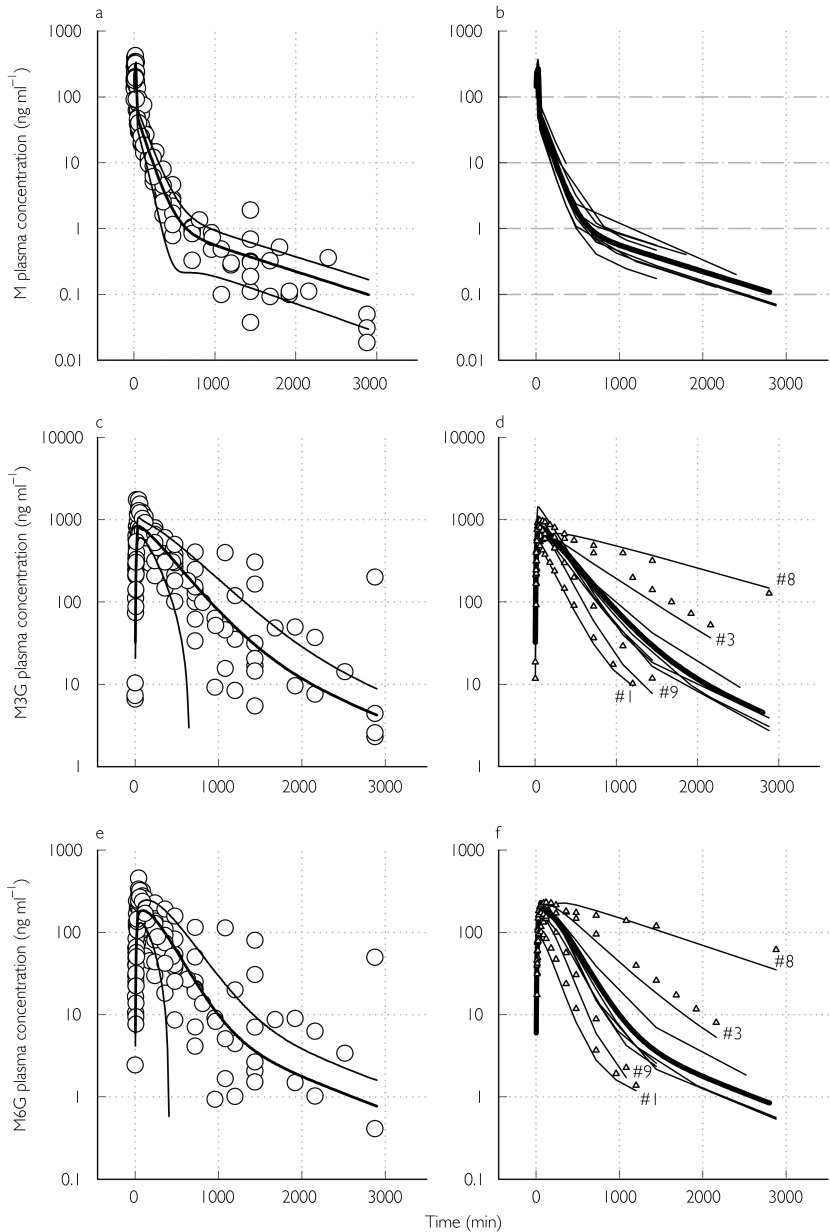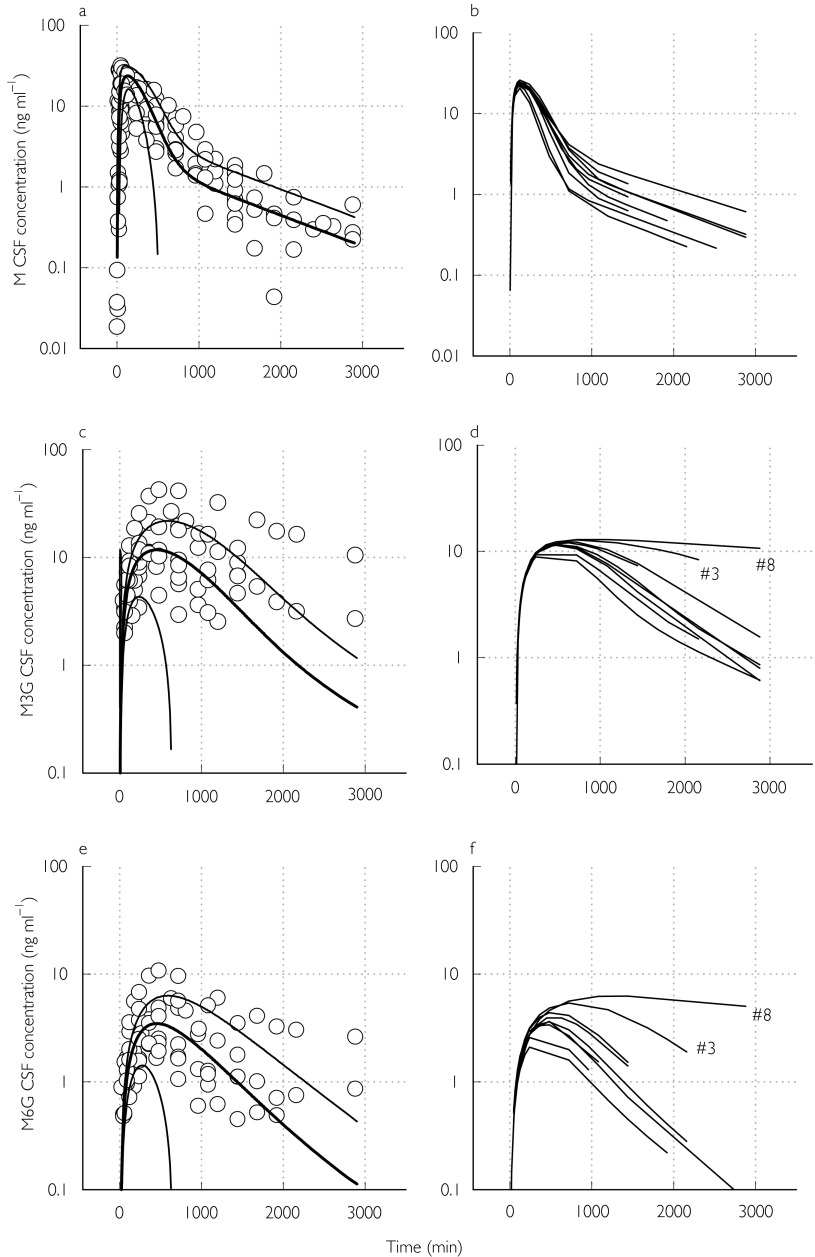Abstract
Aims This study examined the 131I-hippuran extraction fraction during baseline renal blood flow rates and at high flow rates induced by dopamine.
Methods In 12 healthy subjects, arterial and renal venous sampling was used to measure the renal extraction of 131I-hippuran. Effective renal plasma flow values determined by the urinary clearance of 131I-hippuran were compared with renal plasma flow values corrected for incomplete extraction of 131I-hippuran.
Results Dopamine (3 mg kg−1 min−1) decreased 131I-hippuran extraction from 75 ± 4% at baseline to 62 ± 6% (means ± 95% confidence intervals, P < 0.001). Hence, the increase in renal plasma flow (85 ± 23%) greatly exceeded the rise in effective renal plasma flow (51 ± 15%, P < 0.002).
Conclusions Dopamine induced increases in renal blood flow are largely underestimated when measurements are not corrected for incomplete extraction of 131I-hippuran.
Keywords: 131I-hippuran, effective renal plasma flow, iodohippuric acid
Introduction
131I-hippuran and para-aminohippurate (PAH) are eliminated by glomerular filtration and tubular secretion, and at low plasma concentrations they are excreted almost completely during the first passage through the kidneys [1]. Thus, renal plasma flow (RPF) can be determined according to Fick's principle:
RPF = Excretion rate of PAH/[PAH]renal arterial plasma – [PAH]renal venous plasma
Assuming a complete renal extraction of PAH ([PAH]renal venous plasma = 0) and equal steady state concentrations of PAH in systemic venous and arterial plasma (including renal arterial plasma), RPF can be measured as the renal clearance of PAH (CPAH):
RPF = Excretion rate of PAH/[PAH]systemic venous plasma = Cpah,
mostly referred to as the effective renal plasma flow (ERPF).
ERPF has been widely used to evaluate changes in renal blood flow in various pathophysiological states and in response to pharmacological interventions. The use of 131I-hippuran as an alternative indicator has gained preference because its specific activity in plasma and urine is more easily measured than the concentration of nonisotopic PAH.
However, the renal extraction of PAH and 131I-hippu-ran (EPAH/Hip) is lowered during diseases associated with decreases in renal function [2] and by pharmacological interventions that increase renal blood flow [3]. Hence, measurement of ERPF by the renal clearance of 131I-hippuran or PAH implies a systematic underestimation of the renal plasma flow. This can only be corrected for by sampling of blood from the renal vein.
The aim of this study was to determine EHip in healthy individuals during baseline renal blood flow rates and at high flow rates induced by low-dose dopamine. Besides being the most efficacious renal vasodilatating drug known thus far, dopamine also remains as one of the drugs of choice for the treatment of low cardiac output states. Earlier studies in dogs [4] and in hypertensive patients [5] indicated that dopamine decreases EPAH, but the effect of dopamine on EHip in normal man remains unknown. The setup including renal venous catheterization allowed reevaluation of the well established increase in ERPF during dopamine infusion [6].
Methods
Twelve healthy male volunteers aged 23–38 (mean 26 ± years) entered the study after having given their written, informed consent.
Each subject had an arterial cannula inserted in the left radial artery, peripheral venous catheters in both cubital regions, and finally a catheter in the left renal vein (5F), introduced via the right femoral vein. The position of the renal venous catheter (lateral to the junction with the testicular vein) was confirmed radiologically and then every 30 min by measurements of renal venous oxygen saturation. After a 1 h baseline period, an intravenous infusion of dopamine (3 mg kg−1 min−1) was given for 2 h.
ERPF, RPF and EHip at baseline and during the second hour of the dopamine infusion were measured by a constant infusion technique and with timed urine collections, using 131I-hippuran given as an intravenous bolus (0.33 MBq) followed by continuous infusion (0.011 MBq min−1) [6].
One subject had to be omitted because of unwanted side-effects of dopamine (nausea) and one was omitted due to analytical problems. Data were analysed by paired Student's t-tests. All results are expressed as means ± 95% confidence intervals.
Results
ERPF increased during dopamine infusion by 51 ± 15% (P < 0.001) whereas RPF increased by 85 ± 23% (P < 0.001, Figure 1). This difference between RPF and ERPF increases was highly significant.
Figure 1.
Dopamine induced effects on renal perfusion when assessed without (effective renal plasma flow) and with correction for incomplete extraction of 131I-hippuran (renal plasma flow). Significance of differences: * P < 0.002 compared with ERPF. Both methods revealed a highly significant increase in renal perfusion (P < 0.001).
At baseline, the extraction fraction of 131I-hippuran was 75 ± 4%, ranging from 54 to 84% (Figure 2). During dopamine infusion, the extraction fraction decreased to 62 ± 6%, ranging from 39 to 73%.
Figure 2.
Effects of dopamine infusion (3 µg kg−1 min−1) on the fractional renal extraction of 131I-hippuran. Significance of differences: * P < 0.001 compared with baseline.
Discussion
Several studies using the renal clearance of PAH or 131I-hippuran have demonstrated that an infusion of low doses of dopamine in normal humans consistently produces a 30–60% increase in ERPF [6]. The present results show that the increase in total renal plasma flow is associated with a marked decrease in EHip. Thus, dopamine induced increases in renal perfusion are largely underestimated when based on 131I-hippuran clearance measurements that are not corrected for incomplete extraction of 131I-hippuran.
Even in baseline conditions, EHip only averaged 75%. This is well below the values of around 90% for EPAH that have been measured previously in healthy individuals [2, 3]. When based on measurements of ERPF, the low EHip in our subjects resulted in an underestimation of baseline values of the true renal plasma flow by on average 26%. In patients with diabetic nephropathy, Bat-tilana et al. observed that the renal clearance of 131I-hippuran was only 75% of the PAH clearance, indicating a less efficient renal extraction of 131I-hippuran than of PAH in these patients [2]. It remains unknown whether such a difference in renal extraction between the two markers also exists in normal humans. Nonetheless, our data emphasize the need for renal venous sampling and determination of EHip to obtain accurate measurements of renal plasma flow by 131I-hippuran clearance, even in healthy subjects investigated at normal physiological conditions.
Dopamine has previously been shown to decrease EPAH. In seven hypertensive patients with unilateral renal disease, infusions of 1–2 mg dopamine kg−1 min−1 reduced mean values of EPAH from 84% to 72% [5]. In dogs, a higher dose of dopamine (6 mg kg−1 min−1) reduced EPAH by 8% [4]. Other renal vasodilating drugs may have a similar effect on EPAH [3]. Most probably, the fall in EPAH produced by these drugs is secondary to changes in the intrarenal distribution of blood flow. Similar to other renal vasodilators, dopamine has been demonstrated to cause a relatively higher increase in the blood flow to the inner renal cortex and the medulla than to the outer cortex [6]. The former areas of the kidney have the lowest extraction of PAH [3] and, presumably, also of 131I-hippuran.
In conclusion, low doses of dopamine in normal subjects result in a marked reduction of EHip. Even in healthy subjects studied under normal physiological conditions, renal venous sampling and determination of EHip is necessary for accurate measurements of renal plasma flow.
Acknowledgments
This study was supported by grants from The Danish Medical Research Council, Eva and Henry Fraenkel's Memorial Foundation and The Danish Society of Nephrology.
References
- 1.Smith HW, Finkelstein N, Aliminosa L, Crawford B, Graber M. The renal clearances of substituted hippuric acid derivatives and other aromatic acids in dog and man. J Clin Invest . 1945;24:388–404. doi: 10.1172/JCI101618. [DOI] [PMC free article] [PubMed] [Google Scholar]
- 2.Battilana C, Zhang HP, Olshen RA, Wexler L, Myers BD. PAH extraction and estimation of plasma flow in diseased human kidneys. Am J Physiol . 1991;261:726–733. doi: 10.1152/ajprenal.1991.261.4.F726. [DOI] [PubMed] [Google Scholar]
- 3.Dworkin LD, Brenner BM, Brenner BM. The Kidney . Philadelphia: WB Saunders Company; 1996. The renal circulations; pp. 247–285. [Google Scholar]
- 4.Meyer MB, McNay JL, Goldberg LI. Effects of dopamine on renal function and hemodynamics in the dog. J Pharmacol Exp Ther . 1967;156:186–192. [PubMed] [Google Scholar]
- 5.Breckenridge A, Orme M, Dollery CT. The effect of dopamine in renal blood flow in man. Eur J Clin Pharmacol . 1971;3:131–136. doi: 10.1007/BF00558278. [DOI] [PubMed] [Google Scholar]
- 6.Olsen NV. Effects of dopamine on renal haemodynamics, tubular function and sodium excretion in normal humans. Dan Med Bull . 1998;45:282–297. [PubMed] [Google Scholar]




